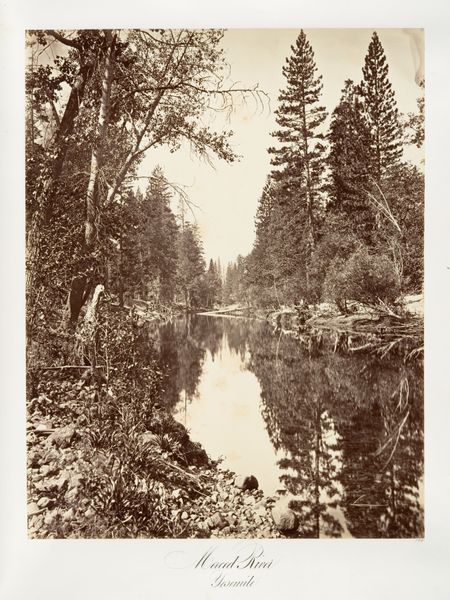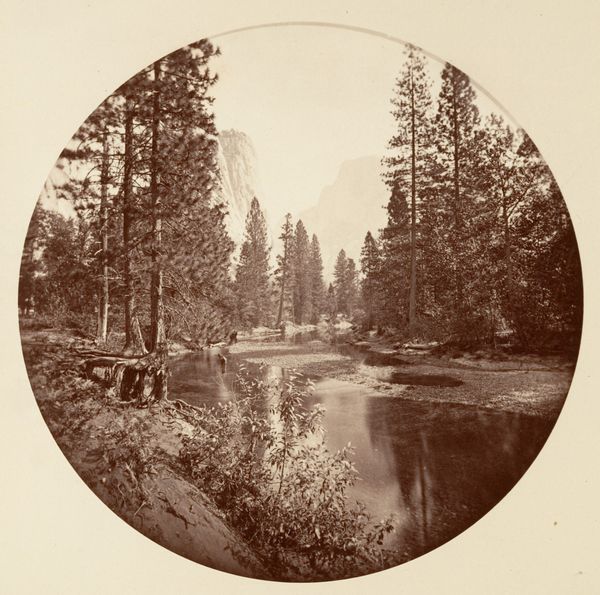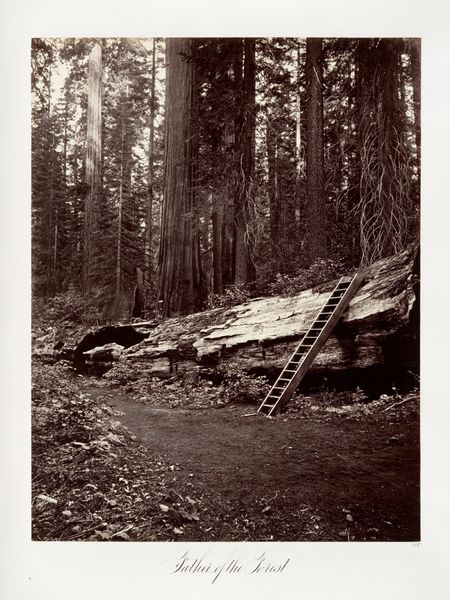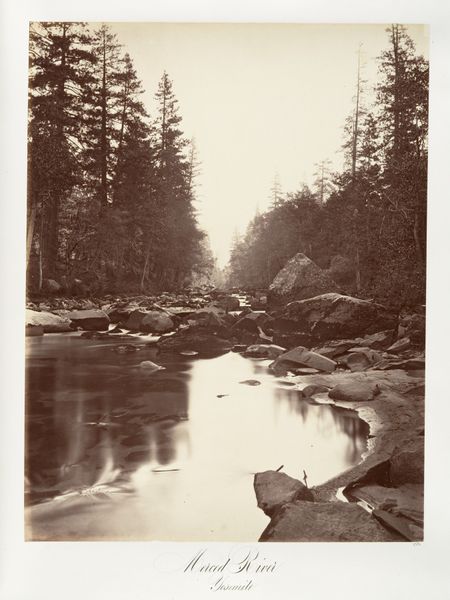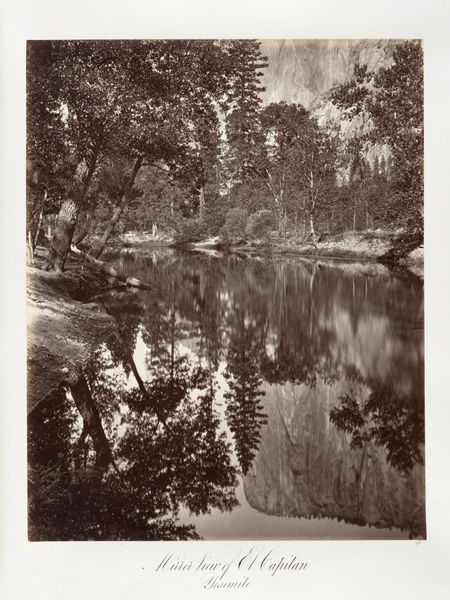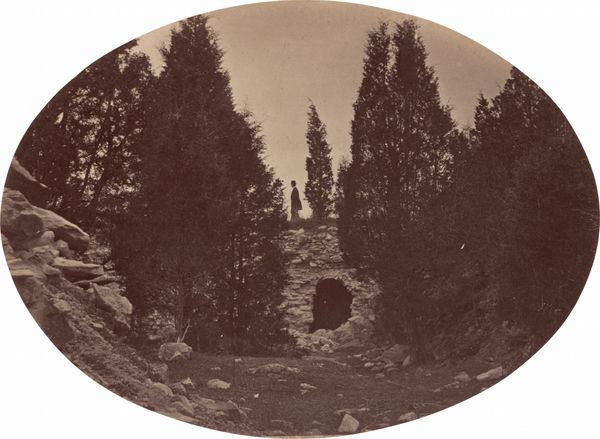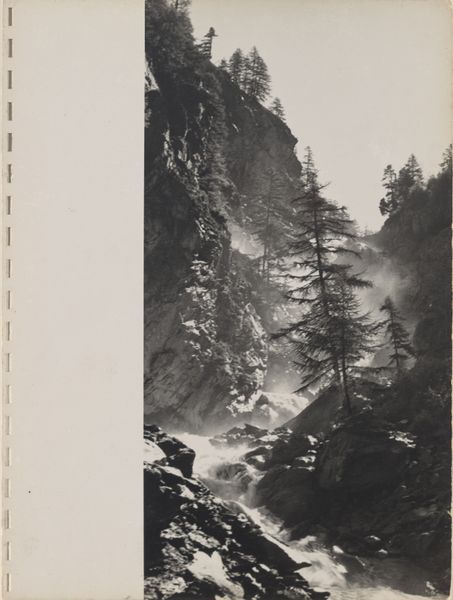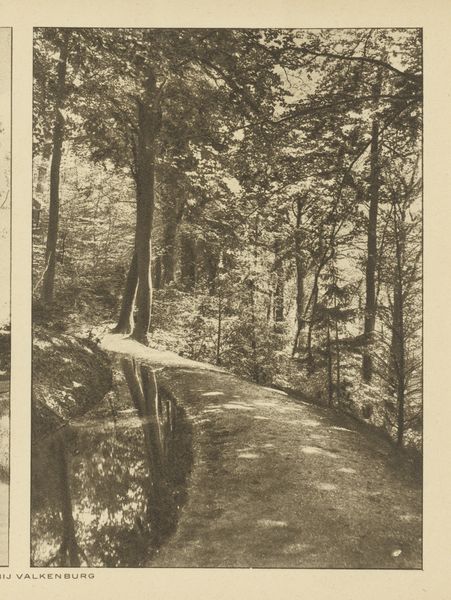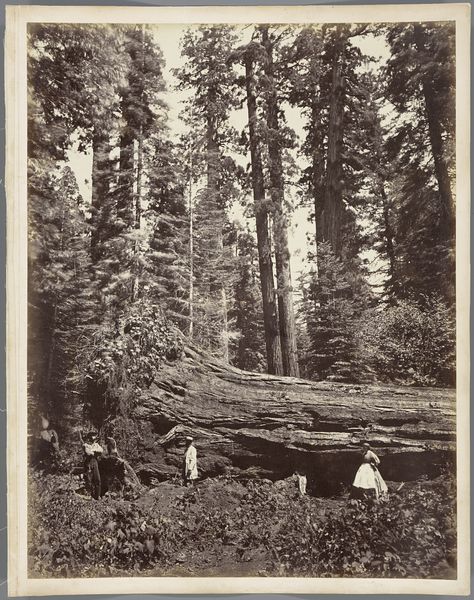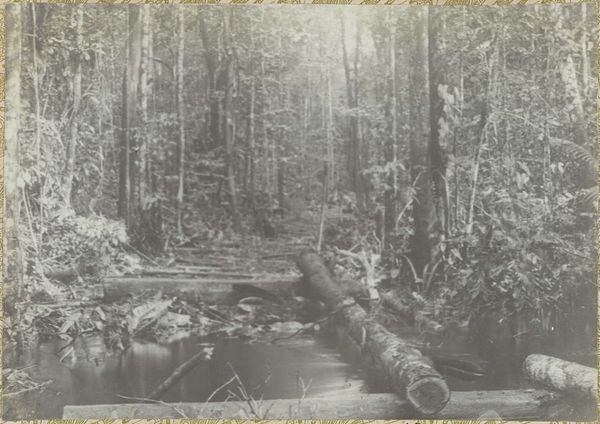
plein-air, photography
#
plein-air
#
landscape
#
nature
#
photography
#
surrealism
#
hudson-river-school
#
realism
Copyright: Public Domain
Curator: Carleton Watkins’s “Hutchings Hotel, Yosemite,” taken sometime between 1870 and 1874, presents a captivating view of early tourism in Yosemite Valley. Editor: My first impression is the stark contrast. The dark, dense forest gives way to a shimmering river, almost as if a curtain has been drawn back, revealing this little slice of…well, not wilderness, exactly, with the hotel in the distance. Curator: Exactly. Watkins wasn't just capturing untouched nature; he was framing it within the context of human development. The Hutchings Hotel itself becomes a symbol, representing the increasing accessibility and commodification of the American West. Consider also the Hudson River School influences – the way he composes the scene to elicit a specific response. Editor: The material reality is intriguing. Look at that fallen tree in the foreground—a natural barrier. It's almost as if nature itself is resisting this intrusion. And the smooth, flowing water achieved with a long exposure. Watkins had to wrestle with his equipment in a challenging environment. Think of the labour involved, processing these large format negatives, probably right there on site in a portable darkroom. Curator: That tension is precisely what makes the image so compelling. We’re confronted with the romantic ideal of unspoiled wilderness alongside the tangible presence of industrial progress, influencing even leisure itself. It makes one consider ideas of manifest destiny in terms of landscape itself being conquered for an industrializing nation’s pleasure. Editor: It’s interesting how he balances what is considered fine art photography with documentation. This image isn’t simply “art.” It served a promotional function, shaping the narrative of Yosemite for prospective visitors and investors. Those hotel builders must have made a handsome investment based in part, probably, on the evidence of works such as this. Curator: It also raises interesting questions about ownership and representation. Watkins was documenting a landscape already deeply entwined with indigenous histories, histories largely erased from these romantic portrayals intended for affluent white Americans and Europeans. Editor: Precisely! Ultimately, I’m drawn to this photograph’s testament to the laborious process of making and selling an image, quite literally. It's more than scenery, it’s commerce. Curator: Yes, I appreciate how it challenges our notion of photographic truth and the forces that drive our experience of even wild landscapes. Editor: It certainly gives me a fresh appreciation of just what it took to frame a photo, both materially and socially, at that time in history.
Comments
No comments
Be the first to comment and join the conversation on the ultimate creative platform.
